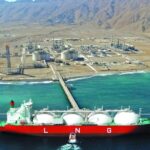The Gulf Cooperation Council (GCC) countries are poised to lead the economic growth in the Middle East and North Africa (MENA) region, with the International Monetary Fund (IMF) projecting robust expansion for these oil-exporting nations in the upcoming years. The IMF’s latest report, released on Thursday, highlights that GCC economies will outperform the broader MENA region in terms of growth for both 2025 and 2026.
Economic Growth Forecast for GCC and MENA
According to the IMF’s projections, the GCC economies are expected to grow by 3.0 percent in 2025 and 4.1 percent in 2026. In contrast, the broader MENA region is set to see a more modest growth rate of 2.6 percent in 2025 and 3.4 percent in 2026. Non-oil exporting countries within MENA will experience even slower growth, estimated at 1.4 percent in 2025 and 1.8 percent in 2026.
The GCC’s stronger performance can be attributed to several factors, including the extension of voluntary oil production cuts by OPEC+ until April 2025 and the more gradual phase-out of these cuts through the end of 2026. While the global oil price volatility has impacted economic forecasts, these countries are also benefiting from their ongoing diversification efforts and massive infrastructure projects aimed at reducing reliance on oil revenues.
Read: UAE to Post Budget Surplus in 2025 Despite Lower Oil Prices
Impact of Global Trade Tensions and Tariffs
The IMF’s report also addresses the global trade environment, particularly the effects of the ongoing tariff disputes. The IMF notes that the direct impact of global tariff wars on the GCC economies will be limited, thanks in part to exemptions on energy exports. Furthermore, the relatively low level of non-oil exports from GCC countries to the United States further insulates these nations from the brunt of tariff changes.
Jihad Azour, the IMF’s Director for the Middle East and Central Asia, highlighted that while tariff changes will not significantly affect GCC economies directly, the broader indirect effects could still pose challenges. He explained that slower global growth may dampen external demand and remittances, while tighter financial conditions could prove difficult for countries with higher public debt.
Azour also noted that the potential drop in oil prices could negatively impact fiscal and external positions of oil-exporting countries. However, these lower oil prices may provide some relief for oil-importing MENA countries, albeit amid a broader trade contraction.
“The indirect effects could be more pronounced. Slower global growth could weaken external demand and remittances, and tighter financial conditions may prove challenging for countries with elevated public debt,” Azour said during a media briefing.
Natural Gas Expansion to Support Growth
Despite challenges posed by the global economic climate, the IMF remains optimistic about the long-term growth prospects for GCC economies, driven largely by natural gas expansion. Oman, Qatar, Saudi Arabia, and the UAE are set to see significant growth in their natural gas sectors, which will play a crucial role in diversifying their economies beyond oil.
These countries are also continuing to invest heavily in renewable energy projects, with the aim of creating more sustainable and resilient economic foundations. This diversification strategy is expected to provide stability and growth opportunities in the years ahead, even amid fluctuations in global oil prices.
Read more: Investcorp Sells Investment in RESA Power to Kohlberg, Marks Successful Exit
Dubai and Abu Dhabi Leading the Way
Azour also projected impressive growth for the UAE’s two largest emirates, Abu Dhabi and Dubai. The Abu Dhabi economy is expected to grow by 4.2 percent in 2025, followed by a stronger 5.8 percent growth in 2026. Dubai’s economy is also poised for growth, with an expected 3.3 percent expansion in 2025, and a slightly improved 3.5 percent growth in 2026.
Abu Dhabi’s growth is bolstered by a recovery in the oil sector, with increased oil production and large-scale infrastructure projects contributing to its positive economic outlook. Dubai, on the other hand, is seeing growth in sectors such as financial services, where its share of the economy is expanding significantly. These sectors are increasingly becoming integral to Dubai’s economic diversification efforts.
The UAE’s resilience in the face of global uncertainty, particularly after the pandemic, has been evident. The country’s capacity to manage the ongoing challenges, while ensuring the safety and well-being of its population, has helped maintain a stable and growing economy.
Conclusion
The IMF’s outlook underscores the crucial role that the GCC nations will play in driving economic growth in the MENA region over the next few years. While the global economic environment remains uncertain, the GCC’s continued focus on diversification, infrastructure development, and energy expansion, particularly in natural gas, positions the region for strong growth. Dubai and Abu Dhabi, in particular, are expected to lead the way, further solidifying their status as key economic hubs in the region. As the GCC economies strengthen, the broader MENA region will also benefit, though at a slower pace, as it navigates challenges posed by global trade and oil price fluctuations.
Follow 10X Times for latest business news updates.






